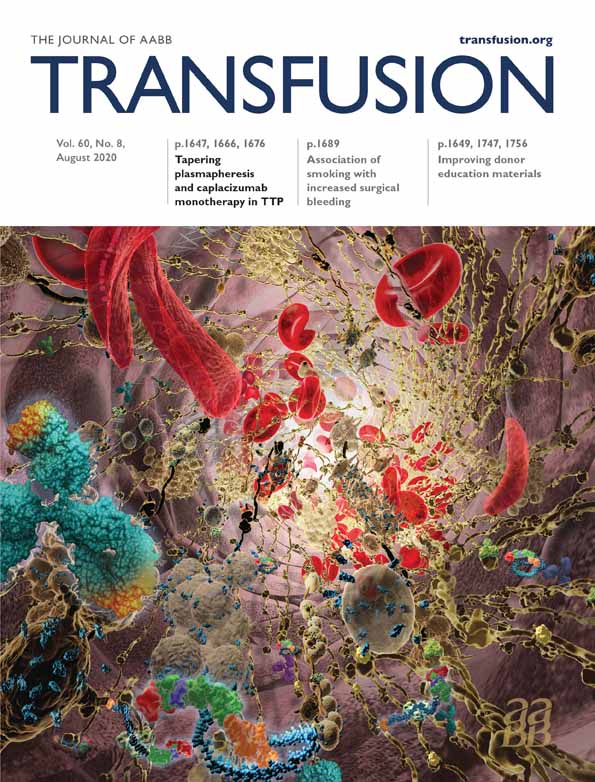A national survey of hospital-based transfusion services on their approaches to platelet bacterial risk mitigation in response to the FDA final guidance for industry
Funding information: None
Abstract
BACKGROUND
Bacterial contamination of platelets is the leading infectious risk to the United States (US) blood supply. On 30 September 2019, the US Food and Drug Administration (FDA) published a Final Guidance for Industry to reduce the risk of transfusing platelets contaminated by bacteria. A national survey was undertaken to assess readiness, attitudes, and the potential impact on hospital-based transfusion services.
STUDY DESIGN AND METHODS
A survey was distributed to transfusion services in all 50 US states. Summary statistics were performed along with review and categorization of email feedback and free text comments.
RESULTS
Eighty-three transfusion services from 48 states participated in this survey study. Currently, the most common approach is primary culture performed at manufacturing (n = 49/83, 59%). Of the bacterial risk mitigation strategies provided by the FDA, the most frequently preferred are (a) pathogen reduced platelets (PRP) for up to 5-day storage (n = 36/77, 47%), (b) large volume delayed sampling (LVDS) ≥48 hours for up to 7-day storage (n = 16/77, 21%), and (c) primary culture ≥24 hours + secondary rapid testing for up to 7-day storage (n = 7/77, 9%). The main motivating factors for the survey participantsʼ selected strategies to comply with FDA final guidance were product availability from supplier, reducing the risk of septic transfusion reactions (STR), and complexity of implementing and performing a new or additional test.
CONCLUSION
While having platelets to transfuse and preventing STR are of the utmost importance, nationwide, the majority of transfusion services do not want to take on performing new or additional testing in their laboratories.
CONFLICT OF INTERESTS
N.M.D. is on the scientific advisory board of Verax Biomedical.
M.F. is a member of a data safety monitoring board for Cerus Corporation.
W.L., M.D., S.N.R. have disclosed no conflicts of interest.




